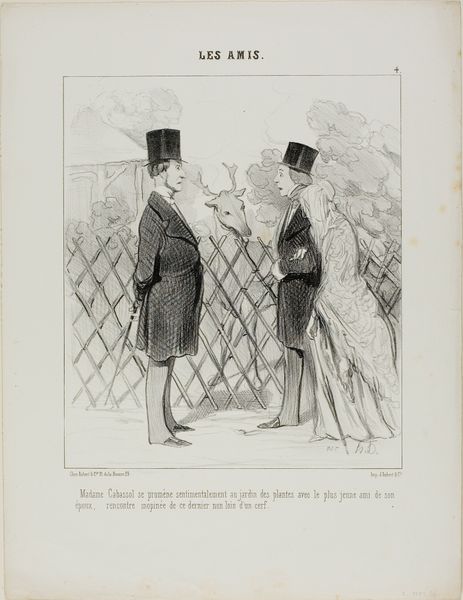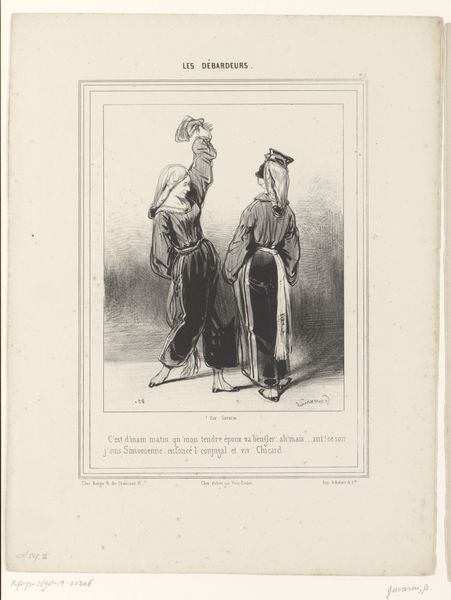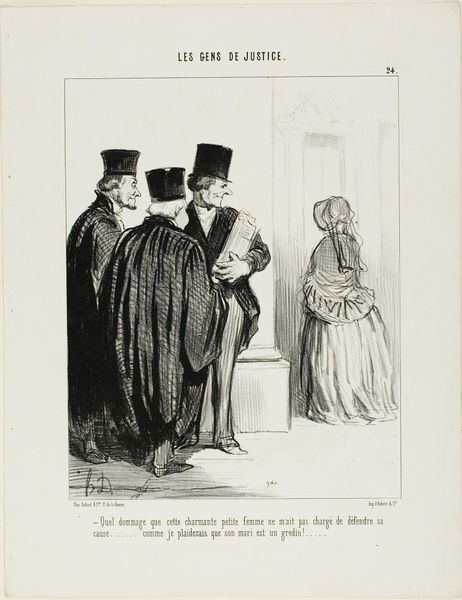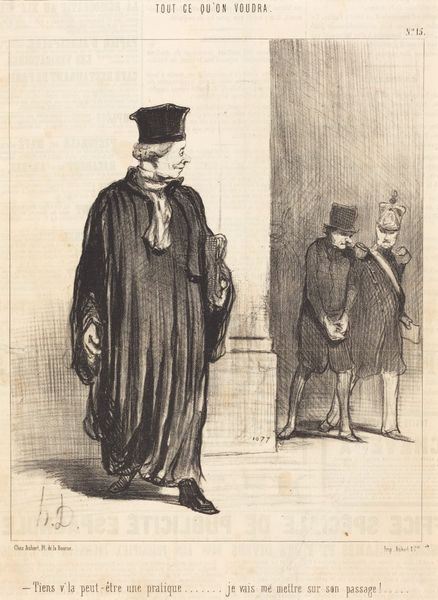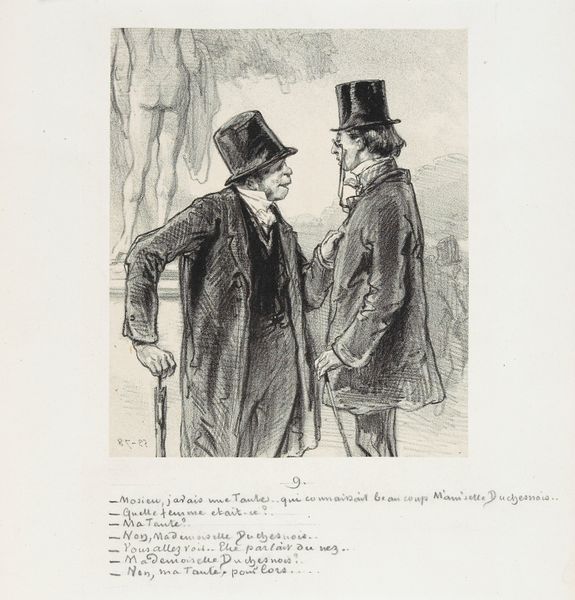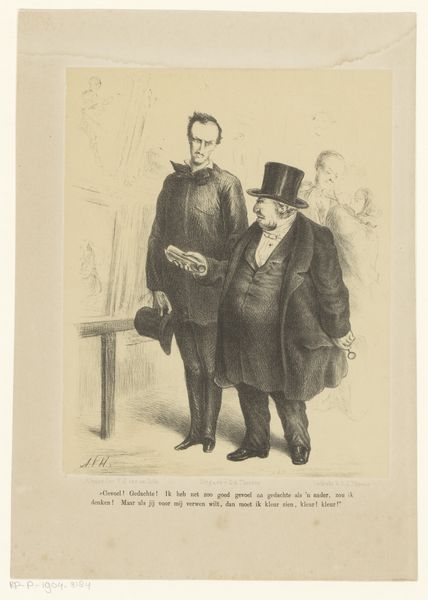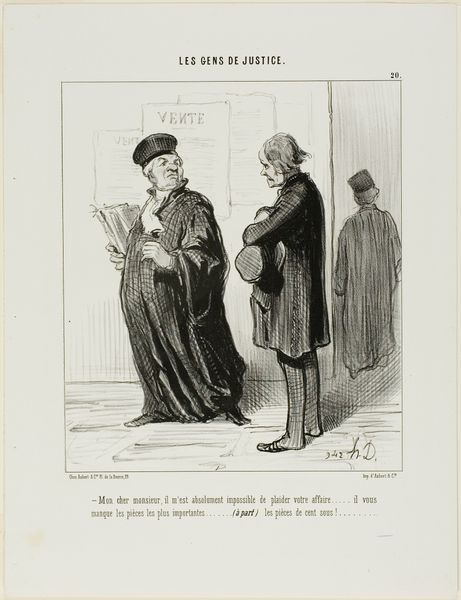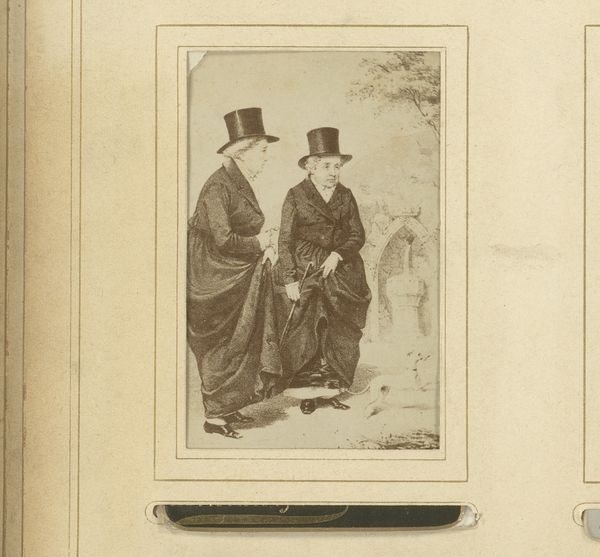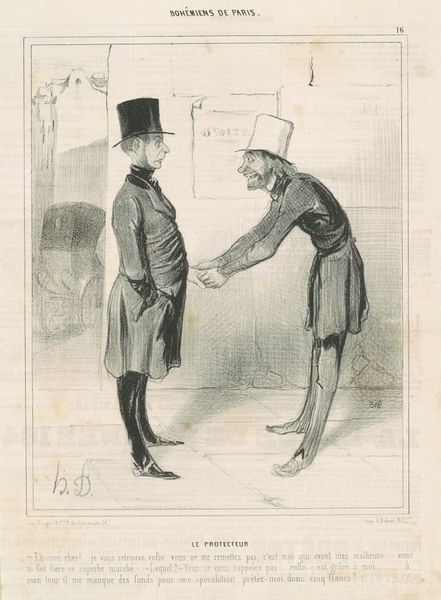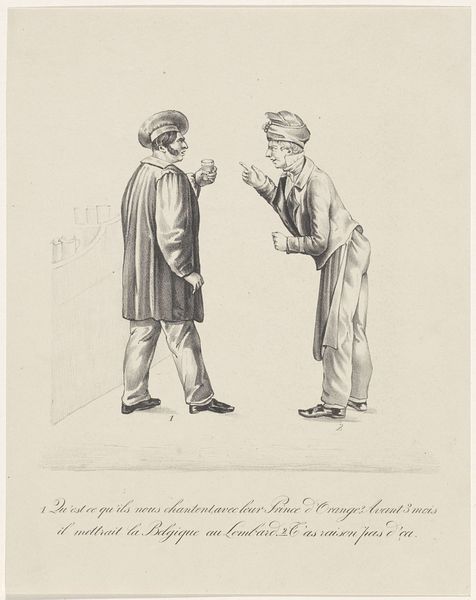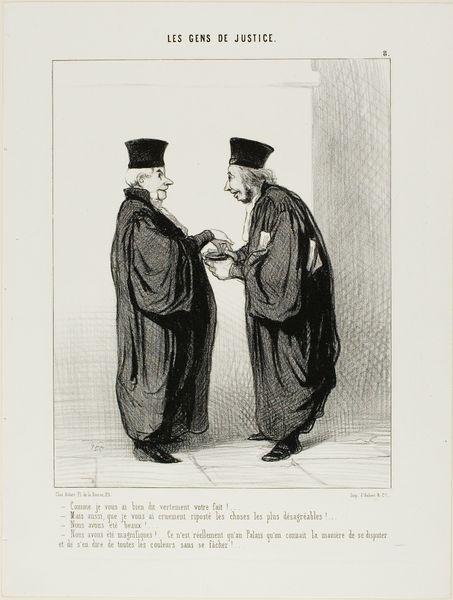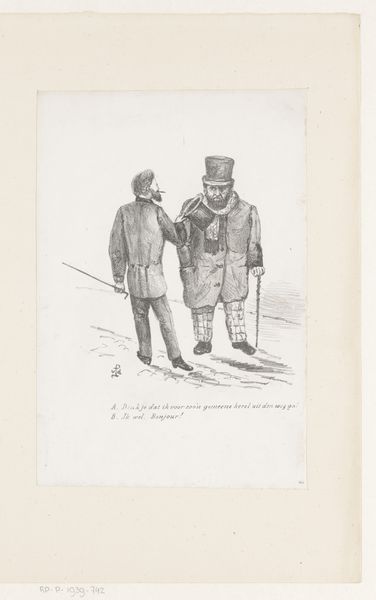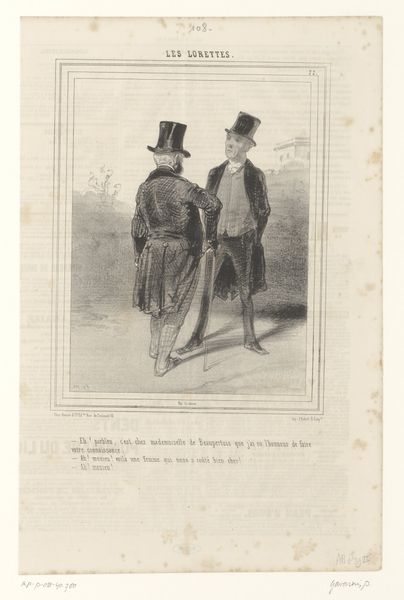
drawing, lithograph, print, pencil
#
portrait
#
pencil drawn
#
drawing
#
light pencil work
#
lithograph
# print
#
charcoal drawing
#
pencil drawing
#
pencil
#
surrealism
#
genre-painting
#
realism
Dimensions: 560 mm (height) x 400 mm (width) (bladmaal)
Curator: Here we have Carl Thomsen’s lithograph from 1894, "Præsten og skolelæren" - "The Priest and the Schoolteacher." Editor: There's something quietly compelling about this print. It evokes a specific time and place. The textures feel soft, like worn cloth, and the expressions, although subtle, hint at a deep-seated respect or, perhaps, a carefully maintained public facade. Curator: The print gives us insight into the social fabric of late 19th century Danish society, examining the roles and relationship of figures of authority in local communities. The composition, which positions the two figures – the priest, identifiable by his formal attire, and the schoolteacher with his walking stick – suggests a kind of professional but necessary relationship. Editor: It's interesting how the artist renders their clothing – the detailed lines suggest the heavy fabrics and rigid formality that constrains the individuals, while both are presented against a simple, somewhat indistinct backdrop, hinting at the ordinary setting of this quiet social theater. I read an anxiety of modernization and societal expectations there. Curator: The deliberate choice of lithography serves this theme perfectly. It enabled Thomsen to achieve nuanced shading and convey textures efficiently, fitting the work’s purpose to widely communicate his observation. Its inherent reproductive quality helped to extend its circulation in a period deeply entrenched in ideas of national identity. Editor: Yes, the accessibility of printmaking brings these figures down from any form of idealization. They’re just men, interacting. Are we meant to reflect upon what each figure represents and their impact, positive or negative, on society’s formation? Curator: Perhaps. Thomsen invites viewers to ponder the power structures inherent in village life and question their role in shaping societal values through such representatives. The composition leaves room for interpreting tensions between religious and secular instruction, personal belief and enforced conformity. Editor: For me, it serves as a prompt to examine historical power dynamics and their echoes within contemporary society. Curator: Indeed, examining the past offers crucial lessons about the evolution of culture, and its power remains influential within artistic, educational, and even religious contexts. Editor: Absolutely. Reflecting on how we understand such constructs provides insight that remains vital to promoting fairness in our increasingly complex world.
Comments
No comments
Be the first to comment and join the conversation on the ultimate creative platform.


